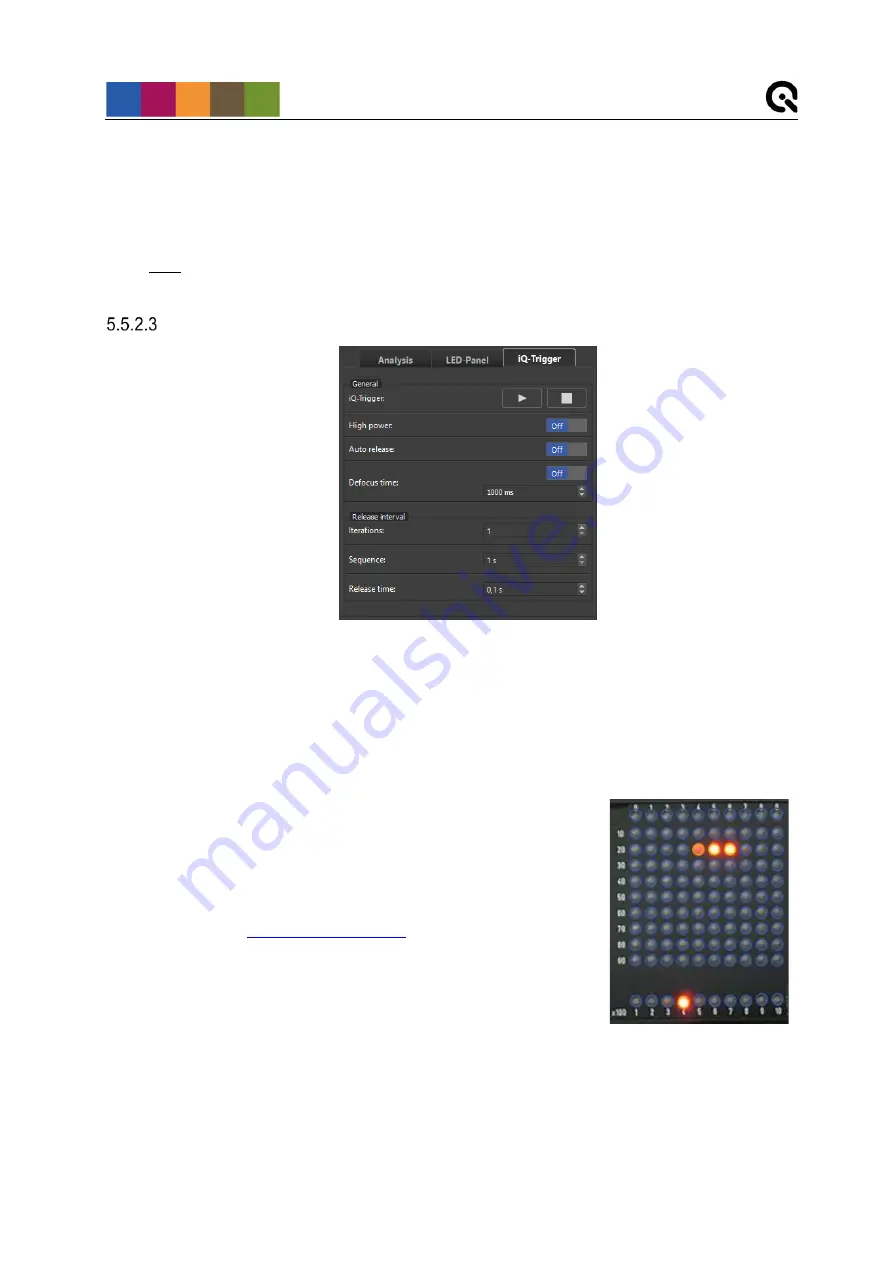
Operating instructions software
21
The slider
Display brightness
adjusts the display brightness. This might be helpful to adjust the
exposure time of the camera correctly for specific testing conditions. For example if you perform
test under low light conditions and use the automatic exposure mode of your camera. Without
dimming the display of LED-Panel the bright display light can influence the exposure of your
camera.
Note: These settings are applied to all connected LED-Panels; it is not possible to control the
devices separately.
iQ-Trigger
Figure 19
Measuring timing is a critical task in the assessment of imaging devices. The human finger
releasing the camera is a source of inaccuracy that should be avoided in a lab environment.
iQ-Trigger is a mechanical finger which can press the release button (touch screen or hardware
button) of a camera precisely and at defined moments.
If iQ-Trigger is connected to an LED-Panel it can be controlled by LED-Panel software as well. It
is possible to automatically take single images or series by an
interval timer (Figure 19). LED-Panel and iQ-Trigger will be
synchronized. LED-Panel starts by releasing the iQ-Trigger using
the play-button.
For detailed information on setting up the iQTrigger (iQ-Trigger-T)
and connecting it with the LED-Panel, please see chapters 3 and
4 (page 7ff) of the iQ-Trigger manual (available in the download
section on the
).
High power:
Increases the thrust of the iQ-Trigger which is
useful for cameras with a stiff shutter release
button
Auto release:
LED-Panel will run but iQ-Trigger will be
delayed until the 50
th
LED is reached
This can be used to measure negative shutter or shooting release time lag,
which is particularly useful for cameras that buffer images even before the
user releases the camera trigger. The difference between it and the actual
Figure 20
















































